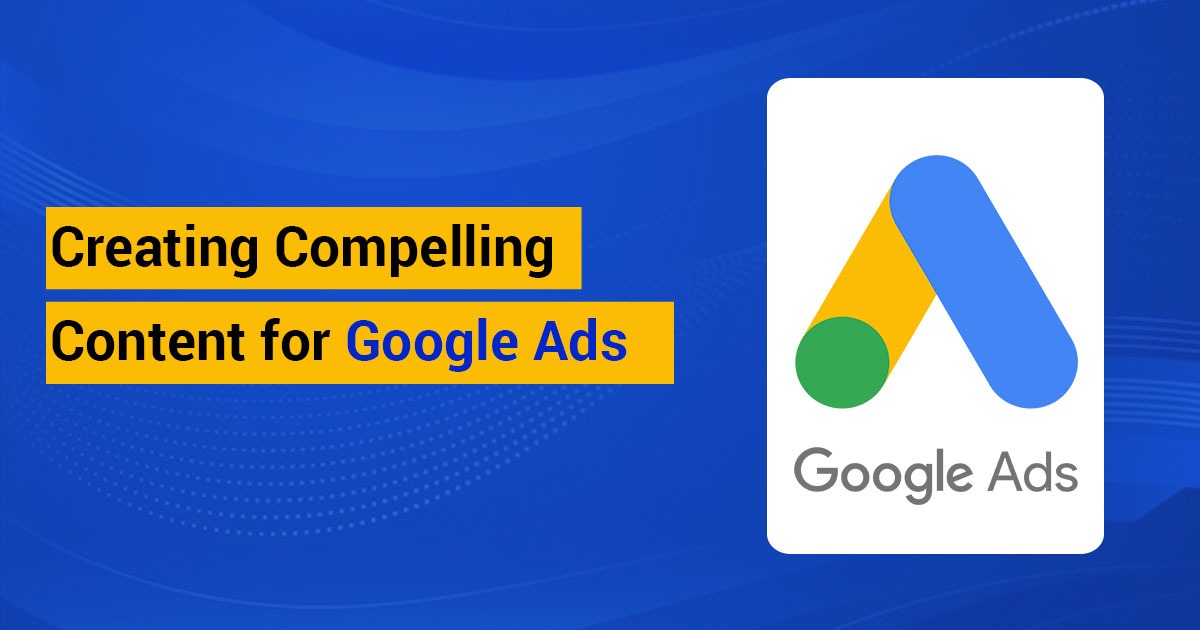Creating Compelling Content for Google Ads
|
Getting your Trinity Audio player ready...
|
Creating Compelling Content for Google Ads
Google Ads is one of the most powerful tools in a digital marketer’s arsenal, enabling businesses to reach potential customers precisely when they’re searching for relevant products or services. However, the effectiveness of a Google Ads campaign largely depends on the quality of the content used in the ads. Compelling content not only captures attention but also drives clicks, conversions, and ultimately, sales. In this blog post, we’ll explore strategies for creating compelling content for Google Ads that resonates with your target audience and maximizes your return on investment (ROI).
1. Understand Your Audience
The foundation of any successful Google Ads campaign is a deep understanding of your target audience. Knowing who your audience is, what they value, and what problems they’re trying to solve allows you to craft messages that speak directly to their needs.
- Buyer Personas: Start by creating detailed buyer personas that include demographic information, interests, pain points, and purchasing behavior. This will help you tailor your ad content to the specific needs and desires of different segments of your audience.
- Keyword Research: Use keyword research tools to identify the terms your audience is searching for. Focus on high-intent keywords—those that indicate a strong likelihood of conversion, such as “buy,” “best,” or “discount.”
2. Craft a Compelling Headline
Your headline is the first thing potential customers will see, and it plays a crucial role in determining whether they click on your ad. A compelling headline should be clear, concise, and enticing.
- Include Keywords: Incorporate the primary keyword you want to target. This not only improves your ad’s relevance but also helps in achieving a higher Quality Score in Google Ads.
- Value Proposition: Clearly state the benefit of clicking on your ad. What value does your product or service offer? For example, “Save 50% on Premium Coffee Beans Today” directly addresses the benefit to the customer.
- Call to Action (CTA): Use action-oriented language that encourages the user to take the next step, such as “Shop Now,” “Learn More,” or “Get Started.”
3. Write Persuasive Ad Copy
Once your headline grabs attention, your ad copy needs to persuade users to take action. This is where you provide more detail about what you’re offering and why it’s worth their time.
- Focus on Benefits: Highlight the benefits of your product or service rather than just the features. For instance, instead of saying “Our software has 24/7 customer support,” say “Get round-the-clock support to keep your business running smoothly.”
- Use Emotional Triggers: Emotion is a powerful motivator. Whether it’s a sense of urgency, fear of missing out (FOMO), or the promise of happiness, tap into emotions that resonate with your audience. Phrases like “Limited Time Offer” or “Only a Few Left in Stock” can drive immediate action.
- Be Specific: Specificity adds credibility and trust. For example, “Rated 4.8/5 by 10,000 customers” is more compelling than “Highly rated by our customers.”
4. Utilize Ad Extensions
Ad extensions are additional pieces of information you can add to your ads, such as phone numbers, location details, links to specific pages, and more. These extensions not only provide more information but also make your ads more prominent and clickable.
- Sitelink Extensions: Direct users to specific pages on your website, such as a best-selling products page or a special offer page.
- Callout Extensions: Highlight key selling points like “Free Shipping,” “24/7 Support,” or “100% Money-Back Guarantee.”
- Structured Snippets: Provide additional details about your products or services, such as types, categories, or features.

5. Optimize for Mobile
With a significant percentage of searches happening on mobile devices, ensuring your Google Ads are optimized for mobile is essential.
- Short and Sweet: Mobile screens are small, so your content needs to be concise. Aim for brief but impactful headlines and copy.
- Mobile-Specific CTAs: Consider using mobile-specific CTAs like “Call Now” or “Download App,” which cater to mobile users’ behavior.
- Responsive Design: Ensure that your landing pages are mobile-friendly, with fast loading times and easy navigation.
6. A/B Testing
Creating compelling content is not a one-time task. Continuous testing and optimization are key to improving the performance of your Google Ads.
- Test Variations: Experiment with different headlines, copy, CTAs, and extensions to see what resonates best with your audience. Even small changes, such as wording or placement, can significantly impact results.
- Monitor Performance: Use Google Ads’ built-in analytics tools to track the performance of different ad variations. Look at metrics like click-through rate (CTR), conversion rate, and Quality Score.
- Iterate and Improve: Based on your findings, refine your content to improve performance. A/B testing should be an ongoing process, with regular updates to keep your content fresh and effective.
7. Align Ads with Landing Pages
Your Google Ads content should be closely aligned with the content on your landing pages. If users click on an ad and the landing page content doesn’t match their expectations, they’re likely to leave without converting.
- Consistent Messaging: Ensure that the language and offers in your ad copy are mirrored on the landing page. This consistency builds trust and reassures users that they’re in the right place.
- Optimize for Conversions: Design your landing page with a clear goal in mind, whether it’s getting visitors to make a purchase, fill out a form, or download a resource. Use compelling headlines, persuasive copy, and strong CTAs on your landing page to drive conversions.
8. Analyze and Adapt
The digital landscape is constantly changing, and so are consumer behaviors. Regular analysis and adaptation are necessary to maintain the effectiveness of your Google Ads content.
- Stay Updated: Keep up with the latest trends in digital marketing and Google Ads best practices. Adjust your content strategy accordingly to stay ahead of the competition.
- Learn from Competitors: Analyze your competitors’ ads to identify what works well and find opportunities to differentiate your content.
- Customer Feedback: Use feedback from customers to improve your ads. If customers consistently mention certain features or benefits, incorporate that language into your content.
Creating compelling content for Google Ads is both an art and a science. By understanding your audience, crafting persuasive headlines and ad copy, utilizing ad extensions, optimizing for mobile, and continuously testing and refining your content, you can create ads that not only capture attention but also drive meaningful results. Remember, the ultimate goal is to create content that resonates with your audience, aligns with their needs, and compels them to take action. With these strategies in place, you’ll be well on your way to maximizing the effectiveness of your Google Ads campaigns and achieving your business goals.

 Previous Post
Previous Post Next Post
Next Post